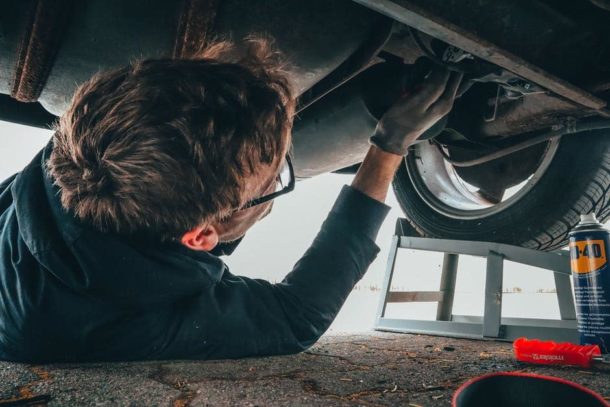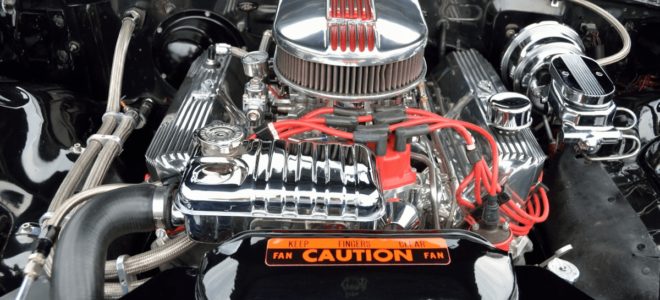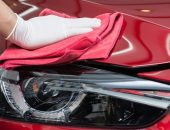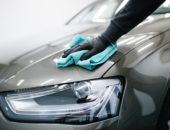Today in the modern world most people use motor vehicles every day to get from one place to another. As not every technical system is perfectly made it is prone to failures. The technical system can be correct or faulty. Regarding the maintenance of motor vehicles, preventive maintenance is performed in terms of regular services, tire replacement, etc. while corrective work is performed after the occurrence of failures. Therefore, in the maintenance of motor vehicles, the use of diagnostic devices that can predict or detect the cause of the failure is unavoidable.
Car diagnostics is necessary for servicing the latest generations of vehicles. Today, vehicles are equipped with sophisticated electronic systems that require service technicians to use a variety of measuring and diagnostic devices. This is also necessary to do before you buy a used car to make sure everything is correct.
Vehicle manufacturers install electronic systems in cars that monitor the operation of the vehicle and signal if there is a malfunction. However, this defect cannot be detected without diagnostic devices. To save additional costs and avoid going to a mechanic, people often try to identify and even eliminate the fault (if any) on their own. If you are one of those who think this way, read the rest of the text which states why you would (not) do it yourself.
Pros

Source: medium.com
1. It’s simple
Self-diagnosis is very easy to do. What you need is a smartphone (it doesn’t matter if it’s an Android or an iPhone), as well as an OBD adapter that can be connected with a cable, but also with a Bluetooth. So, you need to download one of the many apps that are in the App Store, and some of them are even free.
Before buying an adapter or application, we recommend that you ask a friend who already has experience with this type of car diagnostics to lend it to you and show in practice what it looks like. Now that you know that there is a way to save on car maintenance, use that knowledge in the best possible way.
2. It’s cheaper
Car diagnostics is something you don’t need every day, but no matter what, everyone wants to save money. If you take your vehicle for car diagnostics, it will surely cost you more than to do it yourself, and considering that we explained in the previous part how it is done, it does not sound impossible and difficult.
Cons

Source: vikingmotors.ca
1. It’s more expensive
How come it is more expensive now that we have said it is cheaper? Yes, it is cheaper if you know exactly what you are doing, but if you paid for the application and adapter, or even some more professional equipment, and you do not know how to handle it and fix the fault, and the vehicle will end up in the hands of mechanics, you will definitely have to set aside double money.
2. Not all applications are reliable
Unfortunately, there are many applications that are not reliable, and they may not recognize the fault or detect something that works perfectly well. Trusting the diagnostics, you will want to fix it, and in fact, you will do the exact opposite. Therefore, we recommend that you invest in quality and reliable equipment, because you will definitely need it many more times. Read more about it at originaldiag.com.
The basic principle of self-diagnostics is based on the fact that every module in the car (engine, ABS, etc.) has a memory in which all errors or malfunctions that have occurred are recorded while driving. With the help of a diagnostic program, data can be read from that memory The fault is thus very easy to find without going into a more detailed disassembly or disassembly engine.
In addition to reading fault memory, diagnostic programs can display all physical one’s sizes during engine operation or driving, such as speed, engine temperature, pressure oil, intake air volume, turbine pressure, current fuel consumption, phase shift, etc. Except condition monitoring, diagnostic programs can also do various adaptations such as setup “Idle” of gas, resetting service intervals, switching on and off of certain components, “flashing” the instrument panel or motor computer, coding new keys, etc.
3. Vehicle diagnostic process
Whether the diagnosis is made by you or someone else, the process itself does not take long. The process consists of connecting the diagnostic device to the car using a special socket, selecting the type and suit of the vehicle on the device itself, and reading the faults. The golden rule is to repeat the diagnosis twice to make sure there is no reading error.
Final thoughts
The need for car maintenance has existed since the beginning of their development. Not a single part it can last indefinitely and needs to be implemented for preventive or corrective reasons vehicle maintenance. Automatic system fault diagnosis is based on monitoring the values of certain parameters. Using the lights on the driver’s control panel is informed that a particular vehicle system is not working properly and that it is necessary to visit a service technician. Accurate fault detection results in faster and cheaper maintenance. Without diagnostic tools today, it is difficult and almost unthinkable to deal with maintenance vehicles. In order for the diagnostic tool to be used successfully it is necessary knowledge of the operation of components and systems on vehicles. It remains to be seen how it will be further developing the automotive industry, and thus then diagnostic systems.
Experts recommend that new cars and light commercial vehicles be driven for a detailed electronic inspection when they are three years old, the second time when they turn five, and then at least once a year. It is necessary to do a complete inspection, as well as during the obligatory technical inspection of the vehicle, check the braking and control system, shock absorbers, power supply, engine condition, electronics …




